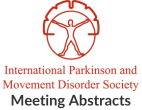Deep brain stimulation in three patients with dystonia and severe cerebellar atrophy
Objective: To describe the outcome of Deep Brain Stimulation (DBS) in patients with dystonia and prominent cerebellar atrophy. Background: There is increasing evidence supporting the…Comparison of mental practice and proprioceptive neuromuscular facilitation in sisters with cerebellar atrophy
Objective: To compare the effect of training between Mental Practice (MP) and Physical Practice (PP) on the strength of the flexor muscle of fingers in…Effects of cerebellar theta-burst stimulation on arm and neck movement kinematics in patients with focal dystonia
Objective: To investigate the influence of the cerebellum on the motor cortex in primary focal dystonia using cerebellar continuous theta-burst stimulation (cTBS) and to evaluate…Core set of measures of balance for people with multiple sclerosis and cerebellar ataxia
Objective: To examine the reliability, validity and interpretability of four measures in assessing the severity of balance dysfunction and short term treatment benefits on balance…Finger tapping-related brain activation and impact of cerebellar theta-burst stimulation in cervical dystonia patients
Objective: To assess brain activation during simple movements of the right hand in patients with cervical dystonia (CD) by means of fMRI. To test the…Sustained effects of cerebellar transcranial direct current stimulation in patients with ataxia: A randomized, double blind, sham-controlled study
Objective: The present study investigated whether a prolonged session of cerebellar anodal transcranial direct current stimulation (tDCS) could improve symptoms in patients with ataxia at…Evaluating the effects of deep brain stimulation (DBS) in mice with spinocerebellar ataxia (SCA1)
Objective: To determine the therapeutic effects of Deep Brain Stimulation (DBS) in mice with Spinocerebellar Ataxia (SCA1). Background: Ataxia is a movement disorder affecting balance…
- « Previous Page
- 1
- …
- 16
- 17
- 18
